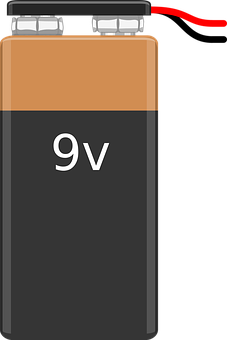Email format error
Email cannot be empty
Email already exists
6-20 characters(letters plus numbers only)
The password is inconsistent
Email format error
Email cannot be empty
Email does not exist
6-20 characters(letters plus numbers only)
The password is inconsistent

Alkaline battery & Button cell manufacturing process-News

Exploring the Cost of 9-Volt Batteries: A Practical Guide
Have you ever found yourself standing in the battery aisle, wondering why 9-volt batteries vary so much in price? These compact power sources play a crucial role in powering various devices, from smoke detectors to guitar pedals. Join us on a journey as we delve deeper into the intricacies of 9-volt battery pricing, uncovering what influences their costs and how you can make informed purchasing decisions.
Understanding the Basics
Let's start with the basics. Unlike traditional cylindrical batteries like AA or AAA, 9-volt batteries are distinctively rectangular in shape, housing six small cells in a compact package. This unique design not only affects their physical size but also impacts their performance characteristics and, consequently, their market price.
Factors Influencing Pricing
Several key factors contribute to the wide range of prices you might encounter when shopping for 9-volt batteries:
1. Battery Type and Composition: One of the primary drivers of pricing is the type of battery and its composition. The most common types include alkaline, lithium, and rechargeable variants. Each type offers different performance characteristics, affecting longevity and suitability for specific applications.
2. Brand Reputation: Just like in any consumer market, brand reputation plays a significant role in battery pricing. Established brands often command higher prices due to their perceived reliability, performance consistency, and sometimes, additional features like leak resistance or extended shelf life.
3. Performance and Longevity: Battery performance metrics such as capacity (measured in milliampere-hours, mAh), shelf life, and voltage stability under load impact pricing. High-capacity batteries designed for long-lasting performance typically come at a premium compared to standard variants.
4. Packaging and Quantity: The packaging and quantity in which batteries are sold can also influence pricing. Buying batteries in bulk often results in a lower cost per unit, making it a cost-effective choice for businesses and households with high energy demands.
5. Technological Advancements: Advances in battery technology, such as improvements in materials, manufacturing processes, and energy density, can lead to higher-performing batteries that may justify a higher price point.

Pricing Trends in the Market
The market for 9-volt batteries is dynamic, influenced by various external factors and internal dynamics within the battery industry:
- Economic Factors: Global economic conditions impact the prices of raw materials used in battery production, such as metals (e.g., zinc, lithium) and plastics. Fluctuations in these costs can affect retail prices.
- Environmental Sustainability: Increasing consumer awareness and regulatory pressures regarding environmental sustainability have spurred the adoption of rechargeable batteries. While rechargeable 9-volt batteries often come at a higher initial cost, their ability to be reused multiple times can lead to long-term savings and reduced environmental impact.
- Market Demand and Supply: Like any commodity, battery prices are also influenced by supply and demand dynamics. Seasonal fluctuations, technological trends (e.g., increased use of battery-powered devices), and even geopolitical events can impact availability and pricing.
Practical Considerations for Consumers
When it comes to purchasing 9-volt batteries, several practical considerations can help you make informed decisions:
- Application-specific Needs: Consider the specific requirements of the devices you intend to power. High-drain applications, such as smoke detectors or audio equipment, may benefit from high-capacity batteries designed to deliver consistent power over extended periods.
- Value for Money: Assessing the balance between upfront cost and long-term performance is crucial. Higher-quality batteries may offer better reliability, longer shelf life, and reduced risk of leakage, potentially offsetting their initial higher cost.
- Retail Options and Promotions: Explore various retail channels, both online and brick-and-mortar stores, for competitive pricing and promotional offers. Sales events, bulk discounts, and subscription services can all provide opportunities to save on battery purchases.
Conclusion
In conclusion, understanding the "price of 9 volt battery" involves recognizing the interplay of multiple factors, from battery type and brand reputation to technological advancements and market dynamics. By gaining insight into these elements, consumers can navigate the battery market with confidence, making choices that align with their needs for reliability, performance, and budget.
Next time you find yourself in need of a 9-volt battery, remember that its price reflects more than just its physical size. It embodies the technological innovations, economic forces, and consumer preferences that shape the battery industry today. Armed with this knowledge, you can empower yourself to make informed decisions and ensure that your devices remain powered reliably and efficiently.

